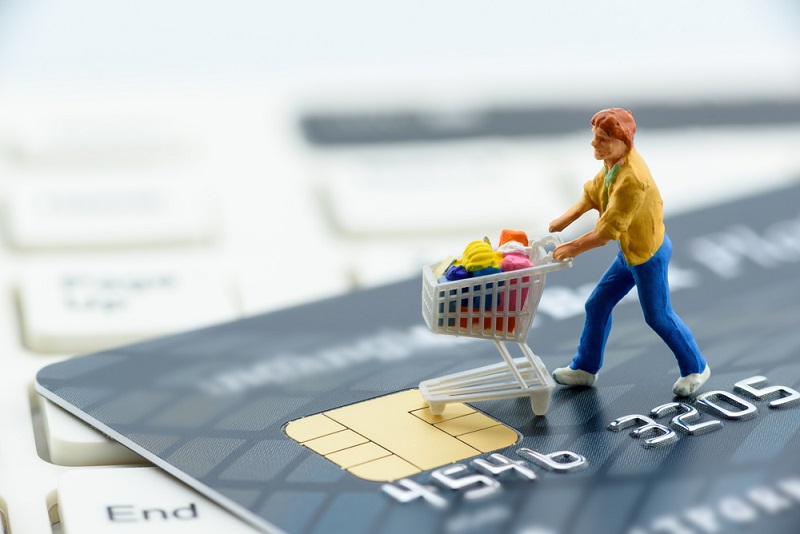Retail Industry in the Post-COVID Era
We all know that the Pandemic had a huge negative impact on almost every business in the world. This topic is being discussed for over a year in the news, different TV programs, blogs, and others. So, this time let’s see what is on the bright side of this whole situation. While offline retail has suffered […] The post Retail Industry in the Post-COVID Era appeared first on SmallBizDaily.

We all know that the Pandemic had a huge negative impact on almost every business in the world. This topic is being discussed for over a year in the news, different TV programs, blogs, and others. So, this time let’s see what is on the bright side of this whole situation. While offline retail has suffered for the whole year (or more), e-commerce has taken off like a rocket. According to eMarketer, e-commerce sales worldwide grew 27.6% in 2020.
Needless to say that such a big leap is conditioned by the lack of ability to go to the store and buy what’s necessary. According to ‘Google’s guide for retailers and brands in 2021’, more than a half of surveyed people said that they do online research of products they are going to buy. In that case, e-commerce has another big advantage except for the no-need to leave the house. Yes, we are talking about more targeted marketing opportunities. For example, you can catch the eye of your potential customer on the research stage.
Events of 2020 showed us that it’s better to be prepared for any force majeure in any business. Of course, the retail industry is no exception.
Why so?
Despite other facts, we can distinguish two main reasons.
- Of course, self-isolation had an enormous impact on the e-commerce boost. As we already mentioned, a lot of people started making online purchases just because of a lack of ability to leave their own house. Thus, we can conclude that such a leap in development was inevitable.
- Due to remote work, a lot of employees got freedom from the physical place they worked. So during the pandemic, a pretty big number of people moved to smaller cities or towns to be closer with family or to get rest from the large and busy metropolises. This means that these people will try to find certain products they are used to in big cities.
What to expect next?
Growth of D2C
An interesting side-effect of e-commerce growth is the development of D2C. D2C is Direct-to-Customer. Same as B2B and B2C, it is a retail model. But despite them, in the D2C model manufacturer sells its goods without intermediaries.
Electronic payments
According to Mastercard Recovery Insights, the US has significantly accelerated the transition to electronic payments. It happened not only because of the growing online sales, but today even in grocery stores, customers prefer contactless payments. In this way, the pandemic helped to outstrip the pace of the transition from cash to electronic payments by an entire year.
Digitization of shopping processes
- Voice search
Alexa, Google Assistant, Siri… This list of voice assistants can go on and on. According to SafeAtLast, about 10.8% of digital customers used Amazon Alexa for online shopping in 2020. Moreover, 18% of millennials use Alexa for voice-assisted shopping. Isn’t it a good reason to prepare your online store for voice searching?
- AR/VR technologies
We will talk more about this later, but it is worth pointing out that today AR/VR technologies have almost become vital features of mCommerce applications.
- Virtual assistants
Robot assistants in online stores can really make the life of your buyers much easier. Whether they have any questions or need help with something, robots can help any time of the day (or night). Earlier, those assistants could help only with trivial issues, but today they became much more complicated. Today’s robots-assistants can help your customers to count delivery periods, choose the size of clothes, prompt product availability, and more. Having one of those could also help you save on salaries for several employees performing the same functions.
How to keep up?
Get yourself software
Following what was said above, the most obvious advice is to invest in an m-commerce application or e-commerce website for your business. With an online store, you have the ability to offer your clients many convenient ways of buying your products. For example, online payments can meet today’s need to maintain social distance. Same as contactless delivery or curbside pickup.
If you have a flexible budget, it’s better to invest in both a mobile app and a website to reach a broader audience.
AR-technologies
Another cool feature you may add to your app is AR try-on service. This trend began long before the pandemic, but we cannot deny that this tool acquired great importance precisely during self-isolation. And we believe that it will be last long. AR try-on service is useful not only to buy new shoes or clothes but also to buy a unique piece of furniture or decor from another city or country. So, the possibilities of this function are limited only by your imagination.
Delivery optimization
Optimize delivery processes. Lately, fast and free delivery has become a serious competitive advantage. It is quite logical that when choosing between different stores, most buyers pay attention to which one has more attractive delivery terms.
Virtual consultations
Pandemic-related restrictions gave a leap to online consultations from offline stores and offices. For instance, before buying anything from the website, you could press the button “Get virtual consultation”. After that, store workers provide a full consultation about the product. They could explain all the issues of interest to the client, demonstrate product operation, and even could try it on if we’re talking about the clothes. Based on statistics of companies that already use this feature, about 30% of those consultations end with a sale.
In conclusion
According to the Mastercard report mentioned before, economies that have adapted to digital technologies before others benefit more today. So, don’t jeopardize your business, be prepared for any surprises.
Katya Uvarova is the lead marketing manager at Messapps – one of the best app development companies in New York. Her motto is to have a deep understanding of our industry to perform the best marketing. She’s a publishing author of articles about app development, marketing, startups, UX design, and many others.
Retail stock photo by William Potter/Shutterstock
The post Retail Industry in the Post-COVID Era appeared first on SmallBizDaily.






















